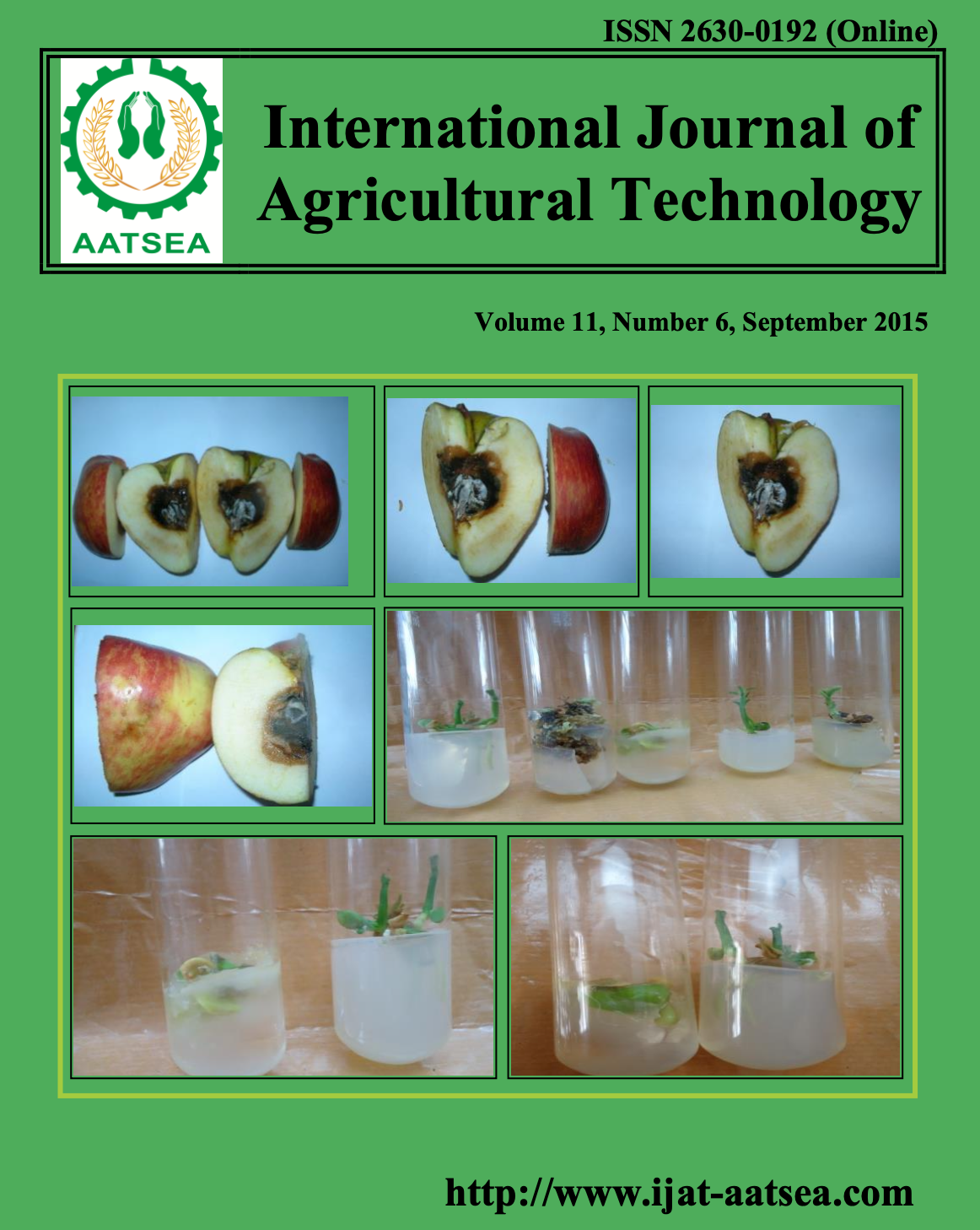Chaetomium spp. as biocontrol potential to control tea and coffee pathogens in Vietnam
Main Article Content
Abstract
The effective isolates of Chaetomium cochliodes, Chaetomium bostrychodes and Chaetomium gracile were isolated in Vietnam. Root pathogen of coffee causing wilt was isolated and identified as Fusarium roseum and leaf anthracnose of coffee was isolated and identified as Colletotrichum gloeosporioides. The wilting tea was isolated the pathogen from roots and identified as Fusarium roseum. Result showed that in bi-culture antagonistic tests, C. gracile, C. bostrychoides and C. cochlioides could inhibit the colony growth and spore production of F. roseum causing wilt of coffee tree. With this, C. cochlioides could inhibit the spore production at 62.82 %. C gracile, C bostrychoides and C cochlioides could inhibit the colony growth and spore production of F. roseum causing wilt of coffee tree. With this, C. cochlioides could inhibit the spore production at 50.49 %. C gracile, C bostrychoides and C cochlioides could inhibit the colony growth and spore production of F. roseum causing wilt of coffee tree. With this, C. cochlioides could inhibit the spore production at 81.26 %. Moreover, all tested crude extracts at 1,000 ppm gave the best inhibition of all tested pathogens. Crude extracts with hexane, ethyl acetate and methanol of C cochlioides inhibited spore production of F. roseumcausing wilt of coffee 60.87, 78.16 and 74.57 %, respectively. Crude extracts with hexane, ethyl acetate and methanol of C. cochlioides inhibited spore inhibition of C. gloeosporiodes causing anthracnose of coffee beans 74.76, 76.50 and 67.63 %, respectively. Crude extracts with hexane, ethyl acetate and methanol of C. cochlioides inhibited spore inhibition of F. oxysporum causing wilt of tea 71.32, 80.19 and 73.76 %, respectively. Further research findings would necessary do for optimum nutritional requirement, environmental impacts, toxicology, formulation development and extension to the growers in the field trials. It is concluded that the effective isolates of Chaetomium cochliodes, Chaetomium bostrychodesand Chaetomium gracile reported for the first time in Vietnam that could control root pathogens, Fusarium roseum causing coffee and tea wilts and leaf anthracnose causing by Colletotrichum gloeosporioides.
Article Details

This work is licensed under a Creative Commons Attribution-NonCommercial-NoDerivatives 4.0 International License.
References
Charoenporn, C., Kanokmedhakul, S., Lin, F. C., Poeaim, S. and Soytong, K. (2010). Evaluation of bio-agent formulations to control fusarium wilt of tomato. African Journal of Microbiology Research 9:5836-5844.
Yaling, L., Pongnak, W. and Soytong, K. (2014). Mushroom and macrofungi collection for screening bioactivity of some species to inhibit coffee anthracnose caused by Colletotrichum coffeanum. Journal of Agricultural Technology 10:845-861.
Phong, N. H., Wattanachai, P., Soytong, K. and Luu, N. T. (2014). Antimicrobial substances from Chaetomium spp. against Pestalotia spp. causing grey blight disease of tea. Journal of Agricultural Technology 10:863-874.
Ratanachredchai, K., Wang, HK., Lin, F. C. and Soytong, K. (2010). ISSR for comparison of cross-inoculation potential of Colletotrichum capsici causing chilli anthracnose. African Journal of Microbiology Research 4:076-083.
Sibounnavong, P., Soytong, K., Divina, C. C. and Kalaw, S. (2009). In – vitro biological activities of Emericella nidulans, a new fungal antagonist, against Fusairium oxysporum f. sp. lycopersici . Journal of Agricultural Technology 5:75-84.
Soytong, K. and Quimio, T. H. (1989). A taxonomic study on the Philippine species of Chaetomium. The Philippine Agriculturist 72:59-72.
Soytong, K., Kanokmedhakul, S., Kukongviriyapan, V. and Isobe, M. (2001). Application of Chaetomium species (Ketomium) as a new broad spectrum biological fungicide for plant disease control: A review article. Fungal Diversity 7:1-15.
Soytong, K. (1992). Biological control of tomato wilt caused by Fusarium oxysporum f. sp. lycopersici using Chaetomium cupreum. Kasetsart Journal (Natural Science) 26:310-313.
Soytong, K. (2014). Bio-formulation of Chaetomium cochliodes for controlling brown leaf spot of rice. Journal of Agricultural Technology 10:321-337.


